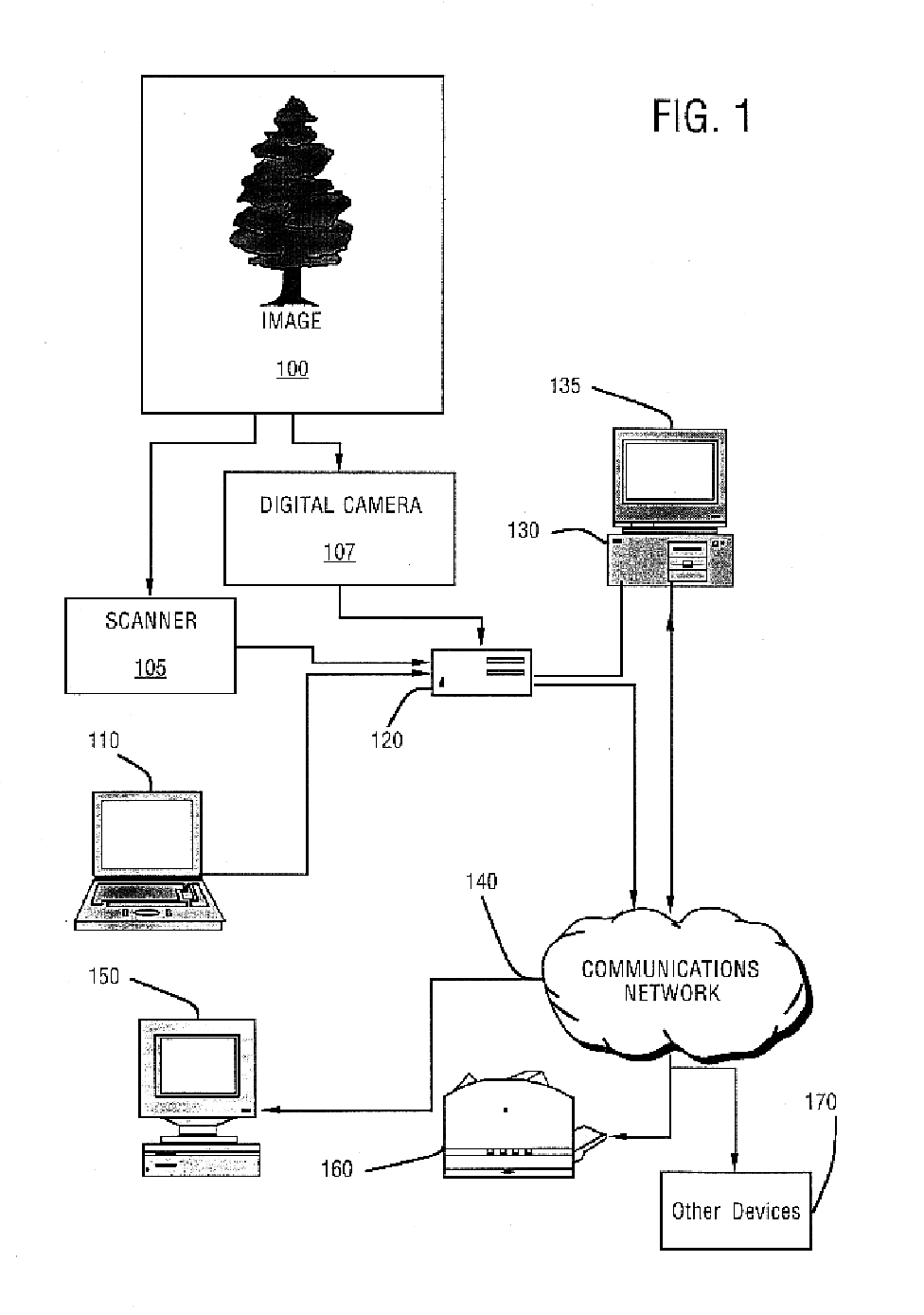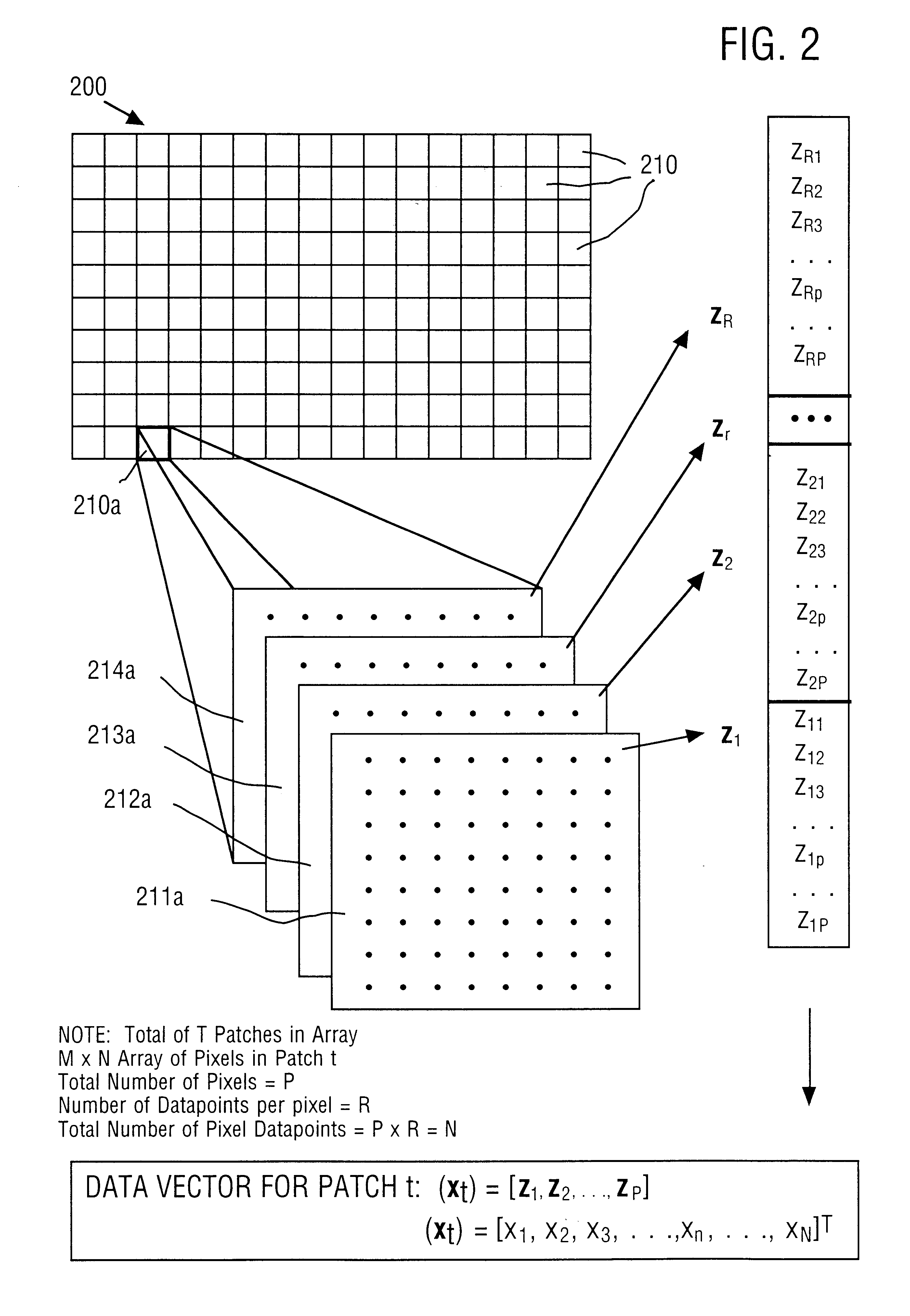Method and apparatus for efficiently encoding chromatic images using non-orthogonal basis functions
a chromatic image and non-orthogonal basis technology, applied in the field of computer-implemented systems and methods for encoding, compressing, and decoding images, can solve the problems of large jpeg files and the corresponding loss of image quality, and achieve the effect of reducing the file size of an encoded image, efficient representation, and improving the accuracy of the encoded imag
- Summary
- Abstract
- Description
- Claims
- Application Information
AI Technical Summary
Benefits of technology
Problems solved by technology
Method used
Image
Examples
Embodiment Construction
This invention is described in the following description with reference to the Figures, in which like numbers represent the same or similar elements.
As used herein, the term “encoding” is used in a general sense to include calculations for processing raw image data and / or compression processes.
In some instances, reference may be made to “basis functions” or “basis vectors”, which are defined by the columns of the basis matrix. For example, the basis functions for class k are defined by the column vectors of the matrix for that class k. Unless otherwise indicated the basis functions disclosed herein should be considered ICA basis functions, which are defined as basis function that have been learned (or “trained”) using ICA processes, resulting in basis functions that are substantially non-orthogonal.
“Color space” refers to the particular standards used to define color; for example red-green-blue (RGB) and cyan-magenta-yellow (CMY) are two commonly-used color spaces. Another color spa...
PUM
 Login to View More
Login to View More Abstract
Description
Claims
Application Information
 Login to View More
Login to View More - R&D
- Intellectual Property
- Life Sciences
- Materials
- Tech Scout
- Unparalleled Data Quality
- Higher Quality Content
- 60% Fewer Hallucinations
Browse by: Latest US Patents, China's latest patents, Technical Efficacy Thesaurus, Application Domain, Technology Topic, Popular Technical Reports.
© 2025 PatSnap. All rights reserved.Legal|Privacy policy|Modern Slavery Act Transparency Statement|Sitemap|About US| Contact US: help@patsnap.com



